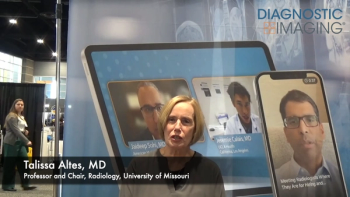
New Multicenter Study Shows Viability of AI Tool for Detecting Central PE on CT
The Pulmonary Embolism (PE) Triage and Notification (PETN) module with RapidAI’s RapidPE platform reportedly demonstrated over 90 percent sensitivity and specificity rates for detection of central PE on computed tomography (CT), according to multicenter study findings presented at the 9th Annual Pulmonary Embolism Symposium.
An emerging artificial intelligence (AI)-powered tool may facilitate improved accuracy in the detection of central pulmonary embolism (PE).
In a recent multicenter retrospective study, researchers examined the use of the Pulmonary Embolism (PE) Triage and Notification (PETN) module — which is included in RapidAI’s RapidPE platform — in a multicenter study involving data from 1,079 computed tomography (CT) scans.
The PETN module demonstrated an overall 94 percent sensitivity rate and a 93 percent specificity rate for central PE, according to the study findings that were presented recently at the 9th Annual Pulmonary Embolism Symposium in Austin, Tx.
For people 50 years of age and younger, the researchers noted a 90 percent sensitivity rate and a 95 percent specificity rate. For people 70 years of age and older, the study authors noted the PETN module had a 95 percent sensitivity rate and a 90 percent specificity rate for central PE.
Additionally, the PETN module offered similar diagnostic performance across CT scanners from different manufacturers, according to the study. In their review of positive scans using CT scanners from Philips, Toshiba, Siemens Healthineers and GE, the study authors noted an average sensitivity of 94.25 and average specificity of 92.25 for central PE.
“The results of this study demonstrate that RapidAI’s Pulmonary Embolism Triage and Notification module performs with a high sensitivity, specificity, PPV and NPV for identification of central PE. This is true regardless of CT scanner manufacturer and across gender and age spectra,” wrote lead author Peter Monteleone, M.D., an assistant professor in the Department of Internal Medicine at the Dell Medical School at the University of Texas-Austin, and colleagues.
(Editor’s note: For related content, see “
Newsletter
Stay at the forefront of radiology with the Diagnostic Imaging newsletter, delivering the latest news, clinical insights, and imaging advancements for today’s radiologists.




























